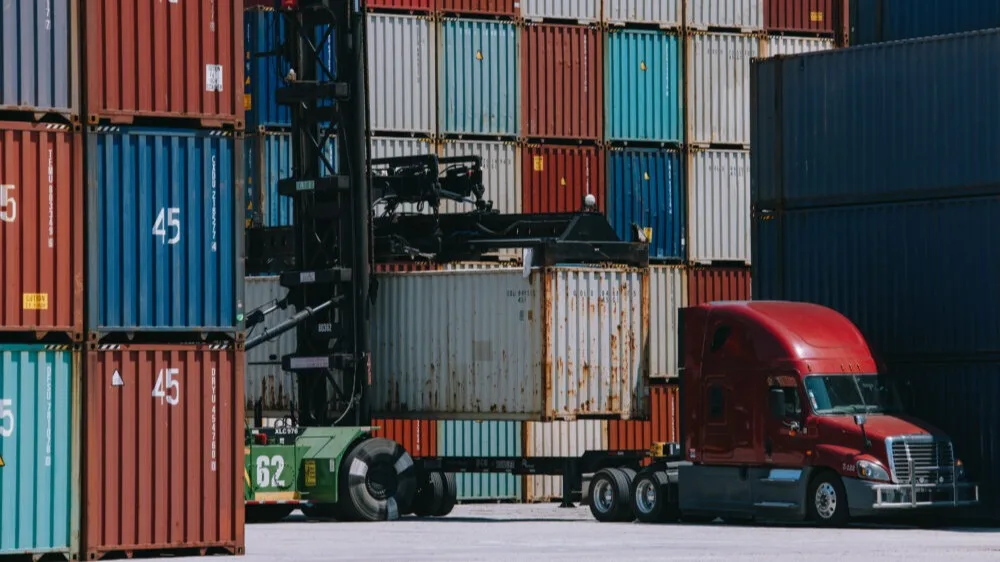
Navigating the looming port strike: How Uber Freight helps shippers stay resilient
A looming strike with the International Longshoremen’s Association (ILA) on the Gulf and East Coasts could cost the economy $5 billion a day if a new contract isn’t signed before October 1.
The strike would impact 36 US ports, spanning a huge geographical region, and have immediate and long-term effects as ports are vital hubs for international trade.
Shippers who regularly use East and Gulf Coast ports have been preparing for the potential strike, but even the most prepared logistics teams need to continue adopting a strategic and agile mindset as the situation evolves.
The team at Uber Freight has been working diligently to inform shippers about the immediate impact the port strike will have on their operations and how to limit their risk.
Immediate impacts of the port strike on shipping and logistics
Even a short strike would cause significant disruption for shippers. According to Mollie LeBlanc, Vice President of Operations overseeing Ocean and Air at Uber Freight, the congestion and disruption of a one-day strike could require a week of recovery.
She added, “The market will see equipment imbalances (shortage or surpluses) in certain locations due to the disruption of port and rail activity. This will lead to price increases and using alternative modes of transportation to get cargo to surplus locations.”
As the East and Gulf Coast ports handle most container shipments, it will be difficult for West Coast ports to absorb all the diverted cargo. Additionally, West Coast ports could become overloaded due to diversions, causing further delays.
Justin Huffman, who is the Carrier Manager at Uber Freight and dedicated to strike mitigation plans, said, “In addition to the operation impact on the West Coast ports due to the influx of inbound containers, rerouting to the West Coast ports can add up to 14 days of transit time and additional port-to-port costs.”
Apart from general rerouting costs, several top container lines have announced they will begin adding port disruption surcharges starting mid to late October, further increasing the costs for shippers impacted by disruptions.
As seen with supply chain disruptions during COVID-19, logistics teams need to have a plan and remain resilient. LeBlanc shared that the Uber Freight team has been working alongside customers on mitigation efforts, including “alternative routings, pre-booked allocation and volume during peak season, and providing daily visibility reports on shipments impacted by routings via US east and gulf coast ports.”
Creation of contingency plans and strategies to mitigate risk
A key part of mitigating risk during disruption is planning ahead—something a partner like Uber Freight handles efficiently alongside their nearly 6,000 customers encompassing $20B in annual freight under management. One of the central underpinnings to managing these logistics networks is its dynamic and adaptable Transportation Management System (TMS) and shipper-focused expertise that goes back three decades.
LeBlanc shared that Uber Freight has been discussing contingency plans with customers who could be affected by the potential ILA strike and incorporating these discussions into recurring business reviews. For impacted customers, this has included working together to ship import orders earlier, helping them avoid disruption and ensuring they have enough inventory on hand if delays occur.
While it is likely too late if a shipper is just starting to work on a contingency plan, it’s possible to work proactively to offset risk. “If you are fortunate enough to have your inbound containers offloaded prior to the strike, work proactively with your transportation providers to have containers picked up as soon as possible to avoid storage costs and potential delays,” said Hoffman.
As shippers navigate uncertainty, Bob Daymon, Head of Client Engagement at Uber Freight, recommends “tracking all inbound containers and working with steamship lines to understand where they will be discharged, and pre-deploying capacity to support the moves.”
Uber Freight’s Head of Intermodal, D’Andrae Larry, added the potential strike should “reaffirm to customers the need to have optionality in their supply chain. Resilient supply chains will continue to benefit from having options to access capacity across modes, vendors and ports.”
Coordinating alternative routes
A significant part of navigating the potential port strike is having alternative routes and options to avoid disruption. Through its network, Uber Freight can supply customers with cross-border and intermodal options.
Daymon said Uber Freight is “working with customers on port diversions to help expedite moves to protect lead times and offering up intermodal and cross-dock options to support their networks.”
Larry also highlighted that Uber Freight’s “intermodal product is helping customers with optionality to the West Coast, Canada and Mexico by providing capacity solutions in those regions.”
If customers are looking for alternative routes, Larry said they could “ship to the West Coast and transload into 53’ containers, or move via rail intact with ocean containers.” LeBlanc also mentioned that air freight is possible, but an expensive alternative.
Daily visibility reports on shipments
Along with having a contingency plan and diverting shipments through alternative routes, logistics teams must have insight and visibility into their shipments. By following shipment statuses and locations, teams can make informed, real-time decisions if a port strike or future disruptions occur.
Uber Freight’s TMS provides customers with shipment tracking tools that provide real-time visibility of their shipments, along with route optimization and freight management, giving customers the ability to react quickly to changing conditions and potential disruptions.
As Huffman stated, “It is vital that our customers remain vigilant and up to date. Our customers have come to rely on and prefer our market updates and insights, even when Uber Freight may not manage that particular piece of their business. Their trust and reliance on our industry updates have been instrumental for why we continue to spend so much time compiling information from trusted sources internally and externally, and working with our operations teams to implement contingency plans.”